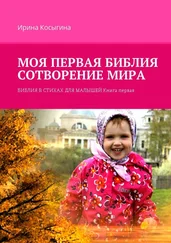Числ 21:4а
Здесь можно усмотреть одно из редакторских пояснений о стоянках в пустыне: редактор соединял между собой различные тексты, касающиеся лет в пустыне.
Числ 21:12-20
Эти стихи, которые цитируют более древние тексты, включая «книгу войн Яхве», сложно отнести к какому-то определенному источнику.
Числ 32:1-42
По-видимому, эта глава включает в себя элементы J и Р. Точно разграничить их по стихам затруднительно.
Числ 33:1-49
Насколько можно судить, этот список стоянок в Числ 33, как и Книга Поколений в Бытии, первоначально представлял собой отдельный документ. Затем редактор использовал его в качестве одного из способов соединить различные тексты в хронологически последовательное повествование.
Втор 32:1-43
Эта песнь, известная как Песнь Моисея, была вставлена в текст автором Dtr 2. На это указывает тот факт, что некоторые темы и понятия, которые разрабатываются в Dtr 2(например, «сокрытие лица»), по-видимому, взяты из этой песни (стих 20).
Эта песнь, известная также как Благословение Моисея, по-видимому, первоначально представляла собой отдельное произведение, затем вставленное в текст.
Втор 32:48-52
Эти стихи повторяют текст Р в Числ 27:12–14. Перед нами редакторский эпаналепсис, снова поднимающий вопрос о смерти Моисея. Понадобился из-за добавления Второзакония к произведению.
Addis, W.E. Documents of the Hexateucb. London, 1892.
Aharoni, Yohonan. “The Solomonic Temple, the Tabernacle, and the Arad Sanctuary.” In H. A. Hoffman, Jr., ed., Orient and Occident , Cyrus Gordon Festschrift . Neukirchen: Neukir-chener, 1973.
Albright, William Foxwell. The Biblical Period from Abraham to Ezra. New York: Harper, 1963.
— From the Stone Age to Christianity. Garden City, N.Y.: Doubleday, 1946, 1957.
Alt, Albrecht. Essays on Old Testament History and Religion. Garden City, N.Y.: Doubleday, 1966. German edition, Kleine Schriften zur Geschichte des Volkes Israel , I, II, III, 1953.
Astruc, Jean. Conjectures sur les memoires originaux dont il parait que Moyse s`est servi, pour composer le livre de la Genese 1753.
Bacon, Benjamin W. The Genesis of Genesis. Hartford, 1892.
Baltzer, Klaus. The Covenant Formulary. Philadelphia: Fortress, 1971. German edition, 1964.
Bright, John. A History of Israel, 3rd ed. Philadelphia: Westminster, 1981.
Brown, Raymond E.; Fitzmeyer, J. A.; and Murphy, R.E., eds. The Jerome Biblical Commentary. Englewood Cliffs, N.J.: Prentice-Hall, 1968.
Busink, Th.A. DerTempelvon Jerusalem. Leiden: Brill, 1970.
Carpenter, J. E., and Harford-Battersby, G. The Hexateuch. London: Longmans, Green, 1902.
Cheyne, Т. K. Founders of Old Testament Criticism. London: Methuen, 1893.
Clements, R. E. Abraham and David. London: SCM, 1967.
Cross, Frank Moore. С anaanite Myth and Hebrew Epic. Cambridge: Harvard, 1973.
- “The Priestly Tabernacle.” Biblical Archeologist 10 (1947): 45- 68.
Driver, S. R. Introduction to the Literature of the Old Testament. Gloucester: Peter Smith, 1972. Original edition, 1891.
Duff, Archibald. History of Old Testament Criticism. London: Watts, 1910.
Eissfeldt, Otto. The Old Testament, an Introduction. P. R. Ackroyd, trans. Oxford: Basil Blackwell, 1965.
Emerton, J. A. “The Origin of the Promises to the Patriarchs in the Older Sources of the Book of Genesis.” Vetus Testa-mentum 32:14–32.
Engnell, Ivan. A Rigid Scrutiny. Nashville: Vanderbilt University Press, 1969.
Fohrer, Georg. Introduction to the Old Testament. Nashville: Abingdon, 1968.
Frankfort, Henri; Frankfort, H.A.; Wilson, John; Jacobsen, Thorkild; and Irwin, W. A. The Intellectual Adventure of Ancient Man. Chicago: University of Chicago Press, 1946.
Freedman, David Noel. “Divine Commitment and Human Obligation.” Interpretation 18 (1964): 419–431.
_ “Pentateuch.” Interpreters Dictionary of the Bible.
_ Pottery, Poetry, and Prophecy. Winona Lake, Ind.: Eisenbrauns, 1980.
Friedman, Richard Elliott, ed. The Creation of Sacred Literature. Berkeley: University of California Press, 1981.
_ The Exile and Biblical Narrative. Harvard Semitic Monographs. Decatur, Ga.: Scholars Press, 1981.
_ ed. The Poet and the Historian. Harvard Semitic Studies. Decatur, Ga.: Scholars Press, 1984.
_ “The Tabernacle in the Temple.” Biblical Archeologist 43 (1980).
_, and Williamson, H. G. М., eds. The Future of Biblical Studies: The Hebrew Scriptures. Semeia Studies: Decatur, Ga.: Scholars Press, 1986.
Grant, Robert M. A Short History of the Interpretation of the Bible. New York: Macmillan, 1948.
Gray, Edward M. Old Testament Criticism. New York: Harper, 1923.
Habel, Norman. Literary Criticism of the Old Testament. Philadelphia: Fortress, 1971.
Hahn, E. The Old Testament in Modem Research. Philadelphia: Fortress, 1966.
Halpern, Baruch. The Constitution of the Monarchy in Israel. Harvard Semitic Monographs. Decatur, Ga.: Scholars Press, 1981.
_ The Emergence of Israel in Canaan. Society of Biblical Literature Monographs. Decatur, Ga.: Scholars Press, 1983.
_ “Sectionalism and the Schism.” Journal of Biblical Literature 93 (1974): 519–532.
Hanson, Paul. “Song of Heshbon and David’s NIR.” Harvard Theological Review 61 (1968): 297–320.
Haran, Menahem. “The Priestly Image of the Tabernacle.” Hebrew Union College Annual 36 (1965): 191–226.
_ “Shiloh and Jerusalem: The Origin of the Priestly Tradition in the Pentateuch.” Journal of Biblical Literature 81 (1962): 14–24.
_ Temples and Temple Service in Ancient Israel. New York: Oxford, 1978.
Herrmann, S. A History of Israel in Old Testament Times. Philadelphia: Fortress, 1975.
Hillers, Delbert. Covenant: The History of a Biblical Idea. Baltimore: Johns Hopkins, 1969.
Hobbes, Thomas. Leviathan, Part 3, Chapter 33. 1651.
Hurvitz, Avi. “The Evidence of Language in Dating the Priestly Code.” Revue Biblique 81 (1974): 24–56.
— A Linguistic Study of the Relationship Between the Priestly Source and the Book of Ezekiel. Cahiers de la Revue Biblique. Paris: Gabalda, 1982.
Hyatt, J. P. “Torah in the Book of Jeremiah ” Journal of Biblical Literature 60 (1941): 381–396.
Читать дальше
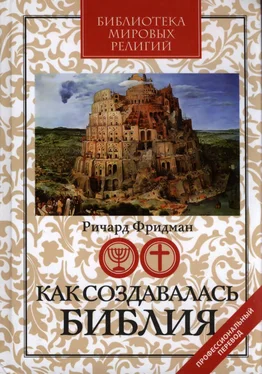

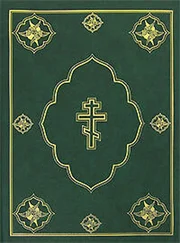

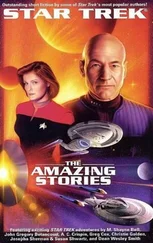
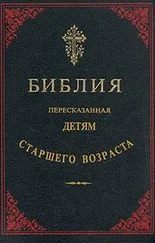



![Библия - Библия [Учебное издание]](/books/433190/bibliya-bibliya-uchebnoe-izdanie-thumb.webp)

